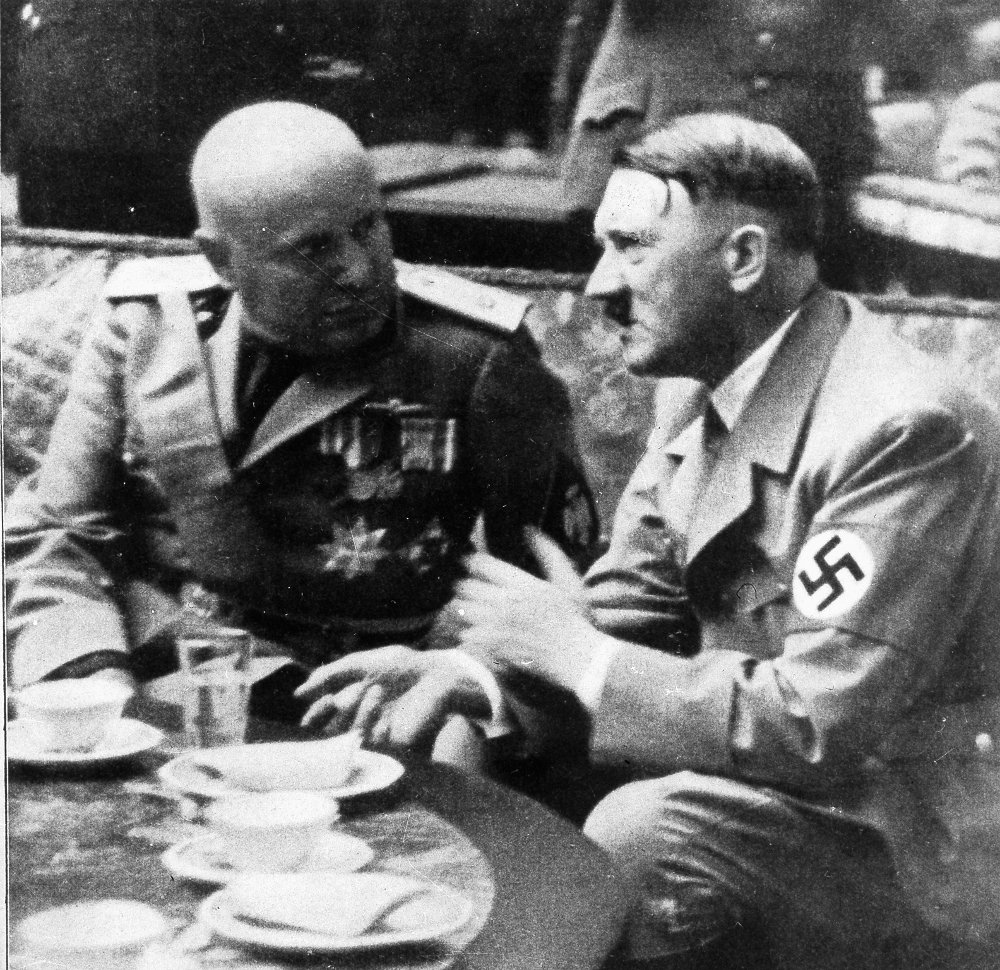Benito Amilcare Andrea Mussolini war Sohn eines Dorfschmieds. Bei Salesianern in Faenza und auf einer staatlichen Schule in Forlimpopoli erzogen, machte er das Volksschullehrer-Diplom. Den Lehrerberuf gab er aber bald zugunsten des politischen Engagements für die Sozialisten auf: Nach lokalen Posten und der Leitung örtlicher Parteiblätter in Trient und Forli kam er 1912 in den Parteivorstand und übernahm die Chefredaktion des Zentralorgans Avanti. Bei der Frage der Beteiligung Italiens am Ersten Weltkrieg stellte er sich gegen die Linie der Partei und rief zur Teilnahme auf; daraufhin schloss ihn die sozialistische Partei im Herbst 1914 aus. Bei Kriegseintritt meldete er sich freiwillig zum Militär. Nach einer schweren Verwundung am Isonzo schied er im Mai 1917 aus dem Heer aus.
Am 18.2.1919 gründete er den Fascio di Combattimento (Kriegsteilnehmer-Bund), aus dem die Faschistische Partei erwuchs und deren ‚Führer‘ (‚Duce‘) er wurde. Nach dem ‚Marsch auf Rom‘ am 27.10.1922 errang er mit seinen ‚Schwarzhemden‘ die Macht im Staat, die er mit rücksichtsloser Gewaltanwendung, Ausschaltung des Parlaments und der Unterdrückung von bürgerlichen Rechten festigte. Nach außen versuchte Mussolini, Italien zu einem Mittelmeerreich nach antikem Vorbild zu erweitern. Der vorübergehenden Besetzung Korfus schon im September 1923 folgten Eroberungsfeldzüge gegen Äthiopien/Abessinien (1935 bis 1936), Albanien (April 1939), Ägypten (1940) und Griechenland (1940/41). Bei diesen Unternehmungen der italienischen Streitkräfte zeigte sich die militärische Schwäche Italiens. Mussolini musste Hitler, dem er vor dem Krieg unter anderem beim Staatsbesuch 1937 und beim Münchner Abkommen 1938 noch auf Augenhöhe begegnet war, um Hilfe bitten.
Die Niederlage in Afrika und die soziale und politische Krise im Inneren führten am 25.7.1943 zum Sturz des ‚Duce‘ durch den ‚Großen Faschistischen Rat‘ und zur Kapitulation Italiens am 8.9.1943. Hitler ließ Mussolini durch ein Kommandounternehmen aus der Haft auf dem Gran Sasso (Abruzzen) befreien und machte ihn zum Führer des norditalienischen Marionettenstaats Repubblica Sociale Italiana. Nach Abzug der Deutschen nahmen ihn italienische Partisanen am 28.4.1945 fest und erschossen ihn und seine Geliebte nach einem standgerichtlichen Urteil in der Nähe von Como. Die Leichen wurden am nächsten Tag in Mailand auf der Piazzale Loreto zur Schau gestellt.


